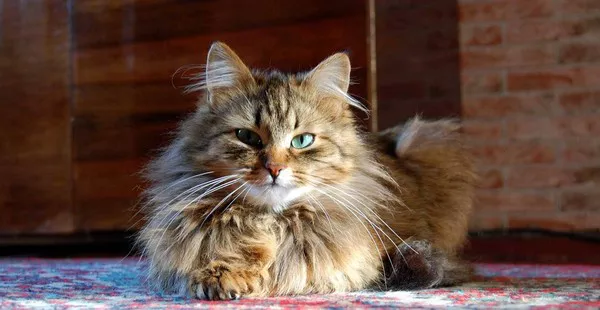For cat owners, the desire to cuddle and hold their feline companions is a natural inclination. However, not all cats readily embrace being held. Some cats may initially resist, displaying signs of discomfort or anxiety. The key to fostering a positive association with being held lies in understanding your cat’s behavior, building trust, and employing gentle techniques. This comprehensive guide explores effective strategies to encourage your cat to enjoy being held, ensuring a harmonious and affectionate relationship.
Decoding Feline Body Language
Before delving into techniques for getting your cat to like being held, it’s essential to decode feline body language. Cats communicate their feelings through subtle cues, and understanding these signals is crucial for creating a stress-free environment. Some common signs of a content or relaxed cat include:
Slow Blinking: A slow blink is a sign of trust and contentment.
Kneading: When a cat kneads with their paws, it indicates comfort and relaxation.
Purring: Purring is a clear sign of contentment, but it can also indicate pain or distress, so consider the overall context.
Exposed Belly: If your cat shows you their belly, it’s a sign of trust, but not all cats enjoy belly rubs.
Ears Forward: Forward-facing ears generally indicate curiosity or a positive response.
Tail Position: A relaxed tail position, often straight up or slightly curved, signals a content cat.
Understanding these cues provides insights into your cat’s emotional state and helps you gauge their comfort level with being held.
Creating a Positive Environment
1. Quiet and Calm Surroundings
Choose a quiet and calm environment for holding your cat. Avoid loud noises, sudden movements, or crowded spaces. Cats are more likely to feel secure and receptive to being held in a tranquil setting.
2. Comfortable Holding Spots
Identify spots where your cat feels secure and comfortable. Cats often have favorite spots like cozy beds or perches. Initiating holding sessions in these familiar locations helps your cat associate the experience with safety.
3. Positive Reinforcement
Use positive reinforcement to create positive associations with being held. Offer treats, gentle praise, or a favorite toy after successful holding sessions. This encourages your cat to view being held as a rewarding experience.
Gradual Introduction to Holding
1. Respect Your Cat’s Boundaries
Start by respecting your cat’s boundaries. If your cat resists being held, forcing the interaction can lead to stress and anxiety. Allow your cat to approach you at their own pace.
2. Scent Familiarity
Familiarize your scent with positive experiences. Spend time playing with your cat, engaging in gentle petting sessions, and providing treats. This helps your cat associate your scent with enjoyable activities.
3. Gradual Touching
Before attempting to hold your cat, engage in gradual touching. Stroke your cat’s back, head, and neck to gauge their comfort level. Pay attention to their body language, and if they show signs of discomfort, pause and allow them to retreat.
4. Short Holding Sessions
Initiate short holding sessions. Pick up your cat gently and support their body while keeping their feet on a solid surface. Gradually increase the duration as your cat becomes more comfortable. Always observe their cues and respect their need to be released.
Building Trust Through Bonding
1. Bonding Through Play
Engage in interactive play sessions to strengthen your bond. Use toys that mimic prey, allowing your cat to express their natural instincts. A strong bond encourages trust and makes holding sessions more enjoyable.
2. Gentle Stroking During Rest
When your cat is in a relaxed state, gently stroke them. This can be during their resting periods or when they approach you for affection. Slowly introduce the sensation of being touched and held while they are at ease.
3. Use of Comfort Items
Place familiar comfort items near you during holding sessions. This could be a favorite blanket, cushion, or toy. The presence of these items provides reassurance and comfort.
Addressing Common Challenges
1. Fear of Heights
Some cats may resist being held due to a fear of heights. If this is the case, keep your cat’s feet close to a surface, providing a sense of security. Gradually elevate them as they become more comfortable.
2. Handling Sensitivity
If your cat displays sensitivity to certain areas being touched, avoid those areas initially. Focus on areas where they enjoy being petted, gradually introducing other areas as trust builds.
3. Patience and Consistency
Patience is paramount in the process of getting your cat to enjoy being held. Be consistent in your approach, and don’t be disheartened by initial resistance. Over time, most cats can learn to appreciate and even seek out cuddle sessions.
See Also: Do Siamese Cats Like to Be Held? [Revealed!]
Conclusion
Building a positive relationship with your cat involves understanding their unique preferences and fostering trust. By decoding their body language, creating a positive environment, and employing gradual introduction techniques, you can encourage your cat to enjoy being held. Patience, positive reinforcement, and consistent efforts contribute to a strong bond between you and your feline companion. Embrace the journey of building trust, and savor the moments of affectionate holding as your cat learns to cherish these loving interactions.



























